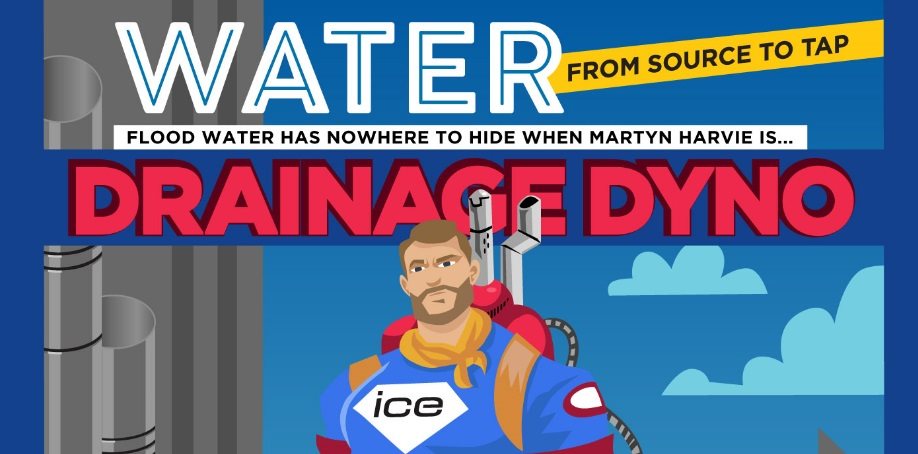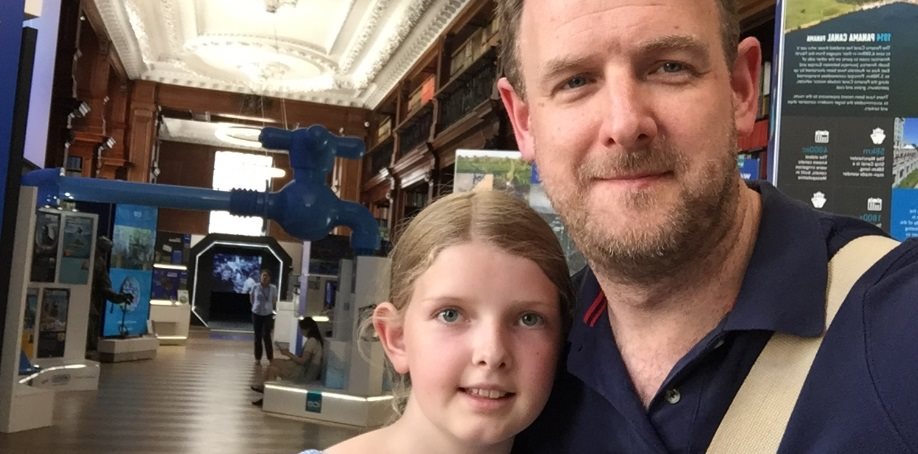

insights Martyn Harvie, practice manager and ICE superhero
What inspired you to become a civil engineer and what misconceptions about the profession have you encountered?
I grew up in Fife in Scotland, not far from the Forth Bridge, and I think the structure itself, the history behind it and the fact that it’s still in-service today, are testament to what civil engineering delivers – although not all of it as visible as this great landmark. I guess that’s what sparked my interest – it comes down to doing something that makes a difference. In terms of misconceptions, I find that most people don’t really know what being a civil engineer entails. I generally say that we provide the infrastructure people need to live their lives: clean water supply, drainage, roads, rail, bridges, airports, power supply, buildings – this is often met with something like: “oh, I thought all that stuff just happened!”
What’s been the highlight of your career so far?
I’ve worked on lots of interesting projects with lots of great people over the last 20 years. When it comes to choosing a highlight, mine isn’t really about building a ‘thing’ in the traditional sense. But once we find the right solution it’s good to see the benefits it brings once it is built – such as reduced flooding or pollution. I’d say all my highlights have been when working with others; discussing solutions coming up with something as a team that none of us would have come up with on our own.
How did you become the ICE’s Drainage Dyno and how can other engineers get involved in promoting the Learning Hub’s message?
I’ve been involved with the local ICE committee in Belfast in different roles for the last seven or so years. I’m currently in my last year as Honorary Secretary. About a year ago, our local ICE Regional Director asked if he could put my name forward when ICE Headquarters went out to the regions looking for individuals to model the Water Superheroes. The ICE cartoonists soon got involved and sent me mock ups of the character. From there it’s really been an ICE project as part of the exhibition.
Whilst I find the whole thing a bit cringe worthy, I think it’s important for those of us who are in the industry to act as ambassadors for the profession. So, if these characters and the exhibition can help raise the awareness of the contribution that civil engineering makes to society, I’m happy to be a small part of that. I would encourage everyone to do a little bit to raise awareness of what we do through talking to friends and family, schools or STEM work, or getting involved with your local ICE committee.
You recently visited the exhibition with your daughter - what did she think of it?
Well, she finds the character pretty amusing and likes to point out that it doesn’t really look much like me! We were in London for a few days on holiday so thought it was worth popping in. She thought the exhibition was interesting. There’s Virtual Reality to try, touch screens and a whole range of different displays and information about water-related projects across the world. My daughter is 12 and whilst there’s stuff to do for younger kids (Lego etc), I’d say that 12+ is a good age to visit and give kids (and adults!) a feel for what being a civil engineer means. I don’t think my daughter will become an engineer, more likely some kind of scientist I suspect. Her opinion is that all I do all day is talk with people – those who know me may have a view on that…
How do you think we can encourage the next generation of kids to become engineers, particularly young girls?
I think the civil engineering industry has moved on. It’s no longer just about muddy boots and hard hats. There is digital, design, planning, environmental and sustainability elements to it, particularly in the water sector. But I don’t think these (non-traditional) aspects are as well publicised as they could be. This means we need a wider range of people with different interests and skills to make it a success. I think if we promoted some of these things better, we could attract a wider breath of people into the industry.
Why do you think all civil engineers are superheroes?
I think that “superheroes” might be overstating it slightly, but… planning, designing, building and maintaining the infrastructure we need as a society to facilitate our lives sustainably is a big job we should all be (a bit less quietly!) proud of. And it’s not just civil engineers – our teams are made up of engineers, scientists, geographers, computer modellers, planners, coders, environmentalists and more. I think that a lot of what we do is about delivering projects as part of a bigger team (internally and with our clients) so our successes are not only as a result of each of our contributions but how we have brought those contributions together.
Finally, why should people bring their family along to the exhibition this summer?
I think better than us taking our families along would be to take a friend or relative who knows nothing about civil engineering to help raise awareness of what we do as industry. Maybe seeing what we do will encourage some of them to join us!
You can visit the ICE’s free exhibition ‘Water: from source to tap’ at One Great George Street, London, Monday to Friday from 10 am to 5 pm, until February 2020.
Interested? Find out more about life at AtkinsRéalis
Sign up to receive the latest content tailored to your interests
Our articles

Preview
GeneralContent type
BlogsPublish date
11/05/2024
Summary
If you’ve been weighing up where to take your graduate scheme or the best places to start an apprenticeship, have you considered living in Bristol? As a proudly multicultural university city, the

Preview
GeneralContent type
BlogsPublish date
10/28/2024
Summary
Hi, I'm Chris, a degree apprentice on the Nuclear & Power team at AtkinsRéalis. My passions are in sustainability and mechanical engineering. I'm currently working on some of the most impactful p

Preview
GeneralContent type
BlogsPublish date
10/24/2024
Summary
As the globe becomes more eco-conscious, many people are looking for careers in sustainability-focused companies. In Spring 2024, 80% of people surveyed by the UK government said they were very or fa

Preview
GeneralContent type
BlogsPublish date
10/24/2024
Summary
Hi, I'm Jasmine, a Graduate Project Manager in the Project & Programme Services team at AtkinsRéalis. I graduated from Loughborough University in 2023 with an Integrated Masters in Product Design
.jpg)
Preview
GeneralContent type
BlogsPublish date
10/23/2024
Summary
It can be stressful to know when to start planning and prepping for your graduate scheme application. There’s a lot of uncertainty when it comes to online research surrounding the question “When s
.jpg)
Preview
GeneralContent type
BlogsPublish date
10/23/2024
Summary
It’s only natural when you’re either in school or university to be thinking ahead about what your future career has in store for you. After all, your educational choices can help shape what’s immedi

Preview
GeneralContent type
BlogsPublish date
10/18/2024
Summary
Hello! I'm Oscar, an AtkinsRéalis apprentice heading into my third year on the Apprentice Consultant Development Programme (ACDP). I help our clients manage projects, programmes, and portfolios,

Preview
GeneralContent type
ProjectsPublish date
10/17/2024
Summary
Hello! My name is Matilda Davis, and I'm based in the AtkinsRéalis Bristol office. I joined AtkinsRéalis last September, straight after my A-Level studies, and I'm now in my first year of the Pro

Preview
EuropeContent type
BlogsPublish date
10/14/2024
Summary
Welcome back to our Digital Her blog series! As Digital Her sponsors, we're committed to empowering young women like you to pursue careers in digital and tech. We aim to break down barriers an

Preview
GeneralContent type
BlogsPublish date
10/14/2024
Summary
When you think of the construction industry, what word springs to mind? Innovation? Resilient perhaps? Despite facing economic challenges, the market perseveres, offering a promising landscape for as
Related jobs
We are sorry but we currently have no jobs in this area.
Continue browsing to look at our other available opportunities

Integrity
We do the right thing, no matter what, and are accountable for our actions.






